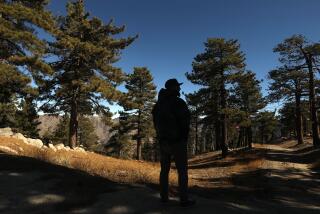Anaheim property all the rage
For nearly three decades, the massive Anaheim dance hall was a premier destination for young Southern California hipsters. They kept coming even as the club changed names and formats to keep up with the times: a disco club called the Crescendo, then the Cowboy, the Bandstand, the Cowboy-Boogie and, finally, the Boogie.
Toward the end of its run, the nightspot also became a popular hangout for the Anaheim Police Department, bringing almost 500 calls a year for underage drinking, fights, stabbings and shootings.
“It was infuriating,” said Anaheim police spokesman Sgt. Rick Martinez. “That place drained all my resources. We only have a certain number of cops on the street in the early-morning hours. And because of all the attention we were paying to the Boogie, I’d be left with only a few cars in the city that weren’t there.”
Ultimately, the club lost its liquor license and closed. But even though the club has been gone for 18 months, the property -- near Katella Avenue and Interstate 5 -- has maintained its popularity.
It’s one of the last remaining large chunks of available land in the city’s 2.2-square-mile Resort District, and Chuck McNees has seen the value of it steadily rise, even as the real estate market has been tumbling.
McNees’ family has owned the six-acre parcel since the 1920s and is feeling pretty good about the decision to hang on to the triangle-shaped lot, which includes a Del Taco and a closed Flakey Jakes hamburger joint.
“We always got offers, but ever since the Boogie closed, we’ve been approached by a lot more developers,” McNees said.
“It’s one of the last pieces of prime property in Anaheim, a city that’s pretty built out. So it’s attracting a lot of attention, and the value keeps going up.”
Although the white, boxy structure never quite fit in with the kitschy look of Old Anaheim, the demise of the Boogie is another reminder that the Googie era is gone and won’t be coming back.
It wasn’t that long ago that nearly everything in the resort area was Googie-themed -- that exaggerated, space-age diner architecture from the 1950s and ‘60s.
At one time, the area was even home to an animal park -- Dutton’s Jungle Garden. On weekends, thousands of people visited the park at Orangethorpe and Raymond avenues. Part zoo, part nightclub, the garden was the place to see and be seen. It closed in 1974 because of financial troubles.
In the mid-1990s, Anaheim began overhauling the cluttered entertainment district with $6 billion in public and private funds. Neon signs and campy motels were replaced by landscaped street medians, towering palms, uniform signage and remodeled, modern hotels.
A block down Katella from McNees’ property is GardenWalk, an upscale outdoor mall set to have its grand opening in the spring. It will include trendy restaurants, shops and two Disney-managed hotels. GardenWalk replaced the circus-tent-styled Melodyland, a musical theater that later became a mega-church.
McNees didn’t say what kind of offers he’s been receiving for his property, but a city official, who asked to remain anonymous, said McNees had been asking $25 million.
While he patiently waits for the right offer, controversy is swirling around him. Across Katella are two mobile-home parks where SunCal Cos. had hoped to build 1,500 homes, including a low-cost housing component. That project sparked a volatile debate over the future of the Resort District, and spawned two lawsuits and three ballot initiatives.
It was announced Thursday that the disputed parcel had been sold to a Texas hotel developer.
Disney opposed the plan because the entertainment giant felt the area should be reserved for tourist-serving businesses such as hotels, restaurants and shops. McNees has been keeping up with the zoning dispute but offered no opinion on it.
“I’m not a political figure, so I’m just watching what’s going on,” he said. “The ultimate authority is the city. I don’t think the city would ever let residential be built here. It’s right at the gateway coming into Disneyland.”
McNees’ parcel has the added value of nearly touching the boundaries of Disney’s planned third amusement park, now strawberry fields and parking lots.
Had the SunCal project moved forward, McNees’ land might have been worth up to $5 million an acre, said Anaheim Councilman Harry Sidhu.
“I think [McNees] was basically staying back and seeing if the SunCal project was approved, sort of waiting for the drama to be finished,” Sidhu said. “He could have said, ‘You have given residential zoning to them, how about me?’ ”
Sidhu estimates McNees’ parcel could still fetch up to $2 million an acre because of its proximity to GardenWalk.
“Big parcels are very scarce in Anaheim,” Sidhu said. “It’s an economic downturn, but this is a great opportunity for any entrepreneur to buy this at the low end. When the economy turns around, it will be a gold mine.”
--
More to Read
Sign up for Essential California
The most important California stories and recommendations in your inbox every morning.
You may occasionally receive promotional content from the Los Angeles Times.










